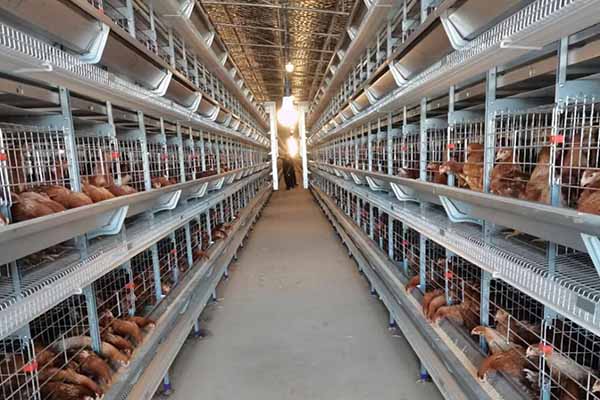Understanding and Optimizing the Use of 40,000 Capacity Chicken Cages
Time : 2025-06-24
The implementation of efficient and scalable poultry farming operations relies heavily on the choice of equipment, especially when it comes to chicken cages. With a capacity of 40,000, these cages represent a significant investment in both time and resources. This article delves into the intricacies of using 40,000 capacity chicken cages, providing valuable insights for poultry farmers looking to enhance their operations.
Overview of 40,000 Capacity Chicken Cages
Definition and Specifications
A 40,000 capacity chicken cage system is designed to accommodate a large number of chickens in a controlled environment. These cages typically range in size, but are often designed to be stackable, maximizing space while minimizing the footprint. They are constructed from high-quality materials, ensuring durability and longevity.
Key Features
– Material: Galvanized steel is commonly used for its resistance to corrosion and longevity.
– Ventilation: Proper air circulation is essential to maintain healthy chickens. These cages are designed with adequate ventilation to ensure optimal conditions.
– Space Allocation: Cages are designed to provide each chicken with ample space for movement and growth.
– Egg Collection Mechanisms: Many cages are equipped with automated egg collection systems, reducing manual labor and ensuring hygienic conditions.
Design Considerations
Layout Planning
The layout of the chicken cages is crucial for the success of the farm. Proper planning ensures efficient use of space and minimizes the risk of disease spread. Here are some key design considerations:
– Single-Deck vs. Multi-Deck: A single-deck design may be suitable for smaller farms, while a multi-deck design can accommodate more chickens per square meter in a larger farm.
– Aisles: Adequate space between rows for maintenance and feeding is essential.
– Cage Positioning: Positioning the cages to maximize natural light and minimize heat exposure is important for chicken health.
Health and Welfare
– Sanitation: Cages should be designed for easy cleaning and disinfection to prevent disease.
– Comfort: Proper space allocation and bedding ensure chickens are comfortable.
– Environmental Control: The ability to regulate temperature and humidity is vital for chicken welfare.
Operational Aspects
Feeding and Watering Systems
Automated feeding and watering systems are crucial for a large-scale operation. These systems should be reliable and efficient, providing the correct balance of nutrients and water to the chickens.
Egg Collection
Efficient egg collection is essential to maintain a clean environment and ensure the quality of the eggs. Automated egg collection systems can reduce labor costs and prevent contamination.
Monitoring and Maintenance
Regular monitoring of the chickens and the cages is essential for early detection of any health issues. Routine maintenance ensures the continued functionality of the equipment.
Economic and Environmental Implications
Cost-Effectiveness
Investing in a 40,000 capacity chicken cage system can be a significant upfront cost. However, the long-term benefits, including increased productivity and reduced labor, often outweigh the initial expenses.
Environmental Considerations
Sustainable poultry farming practices are increasingly important. These include using energy-efficient lighting, optimizing waste management, and considering the impact of the operation on the local ecosystem.
Case Studies
Successful Implementation
Several poultry farms have successfully implemented 40,000 capacity chicken cage systems. Case studies can provide valuable insights into best practices, including layout, operational procedures, and cost analysis.
Conclusion
The use of 40,000 capacity chicken cages is a critical component of modern poultry farming. By considering the design, operational aspects, and economic implications, poultry farmers can optimize their operations and ensure the health and welfare of their chickens. This article provides a comprehensive guide to help farmers make informed decisions and achieve success in their poultry farming endeavors.
Tags












